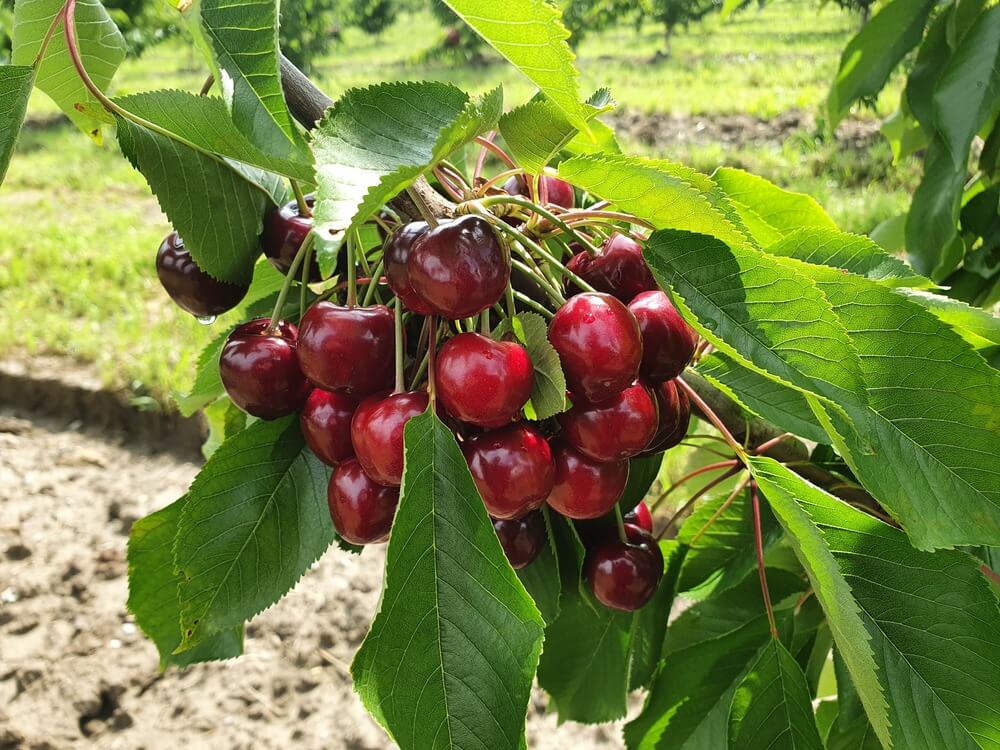The packaging of sweet cherries, especially during storage and transportation, is crucial for maintaining quality and reducing waste. A recent study by Chinese and American researchers analyzed the effectiveness of different perforation levels in zipper-lock bags to extend the freshness of “Chelan” and “Lapins” sweet cherry cultivars, both with and without stems. The goal was to reduce the weight loss of the cherries and improve resistance to post-harvest disorders.
The research demonstrated that reducing the perforation ratio of the bags from 1% to 0.5% or 0.05% increased the relative humidity inside the packages, helping to reduce weight loss of both the fruit and the stems. Moreover, the lower perforation ratio improved fruit firmness and skin brightness.
Cherries packaged with a 2% perforation ratio showed lower quality compared to those packaged with lower percentages. These new packaging solutions allow higher CO2 levels and lower oxygen levels, thus slowing down ripening and cherries deterioration.
A key aspect highlighted by the study is the accumulation of condensation inside bags with a very low perforation ratio of 0.05%, which significantly increased the rate of decay, particularly in stem-free cherries. This suggests that, while minimal perforation may benefit some quality parameters, it also carries a higher risk of excessive moisture, promoting mold growth.
Overall, a perforation ratio of 0.5% proved to be the most effective in maintaining product freshness without compromising quality, balancing humidity control and preventing microorganism growth.
Another interesting aspect of the study is the impact of the stem on sweet cherry preservation. Cherries with stems tend to retain higher quality compared to those without stems, thanks to reduced water loss from the abscission point. Stemless cherries showed quicker deterioration. Nonetheless, stem-free cherries also benefited from the use of bags with a 0.5% perforation ratio, demonstrating that waste from these typically discarded fruits can be reduced.
The study also showed that maintaining consistently low temperatures during transport and storage is essential to preserve sweet cherry quality, minimizing fluctuations in humidity and temperature that accelerate weight loss and ripening. However, it was observed that even with the best packaging practices, it is difficult to guarantee ideal temperature conditions
throughout all stages of distribution; thus, the use of bags with the correct perforation level becomes even more important.
In conclusion, this study demonstrated that the use of perforated bags with a 0.5% perforation ratio represents an optimal solution for maintaining sweet cherry quality during storage and marketing periods. This technology not only extends shelf-life but also helps reduce food waste, thereby improving the efficiency of the entire supply chain. However, constant monitoring of temperature and humidity is necessary to maximize the benefits of these packaging systems.
Source: Zhi, H., Dai, H., Leisso, R., & Dong, Y. (2024). Utilization of perforated zipper‐lock packaging bags to improve the quality of stem‐on and stem‐free ‘Chelan’and ‘Lapins’ sweet cherries during the storage and marketing periods. Packaging Technology and Science, 37(3), 199-210. https://doi.org/10.1002/pts.2789.
Image: Dissolve
Andrea Giovannini
University of Bologna (IT)
Cherry Times - All rights reserved












